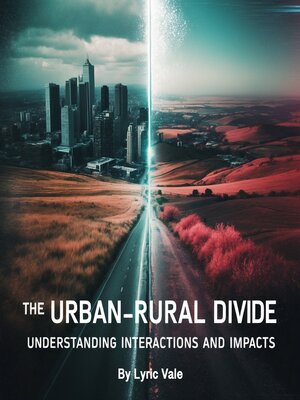The Urban-Rural Divide
audiobook (Unabridged) ∣ Understanding Interactions and Impacts
By Lyric Vale

Sign up to save your library
With an OverDrive account, you can save your favorite libraries for at-a-glance information about availability. Find out more about OverDrive accounts.
Find this title in Libby, the library reading app by OverDrive.



Search for a digital library with this title
Title found at these libraries:
| Library Name | Distance |
|---|---|
| Loading... |
The urban-rural divide is a concept that encompasses the differences between urban and rural areas in terms of population, economy, infrastructure, social services, and quality of life. As the world has rapidly urbanized in the past few centuries, the divide has grown wider, shaping the way people experience and interact with the world around them. Understanding the urban-rural divide requires looking not just at geographical distinctions but also at the historical, social, and economic forces that have led to the creation of these disparities.
At its core, the urban-rural divide refers to the uneven distribution of resources, opportunities, and access to services. Urban areas, often characterized by their dense population, advanced infrastructure, and proximity to economic opportunities, tend to attract people from rural areas in search of better livelihoods. On the other hand, rural areas are often defined by their smaller populations, agricultural economies, and more limited access to healthcare, education, and technological advancements. Over time, this gap has widened as cities have grown into centers of global commerce, culture, and innovation, leaving rural communities to face challenges such as depopulation, economic stagnation, and a lack of essential services.
This divide is not just a modern phenomenon. Historically, the urban-rural relationship has been shaped by factors like industrialization, the rise of agriculture, and migration patterns. During the Industrial Revolution, for example, many people from rural areas flocked to cities in search of work, marking a key moment in the expansion of the urban-rural divide. These migration patterns have continued in the present day, with rural populations in many countries continuing to shrink as more people move to urban centers for better prospects.







